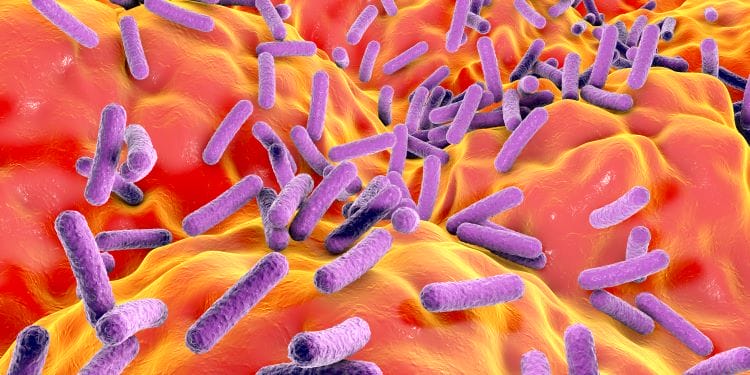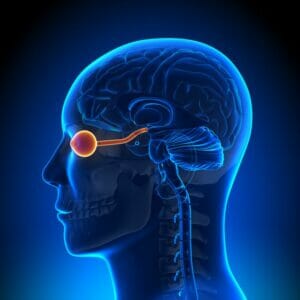July 7, 2023
The gut microbiome orchestrates immunity, human metabolism, and gene expression:
“The hundred trillion bacteria in the body of an adult human contain about four million distinct bacterial genes, with more than 95% of them located in the large intestine. Since most of these genes encode for enzymes and structural proteins that influence the functioning of mammalian cells, the gut microbiome can be viewed as an anaerobic bioreactor programmed to synthesize molecules which direct the mammalian immune system, modify the mammalian epigenome, and regulate host metabolism.”
(Galland L. Gut Microbiome and Brain. J Med Food 2014)
‘All Disease Begins in the Gut’ — Hippocrates
It is now well established in the literature that our lifetime partners, the over one hundred trillion bacteria that live within us and on us, have a significant impact on our health by influencing the function of our immune systems. Inflammaging, the root of the chronic diseases of aging, is largely influenced by our lifetime partners which comprise the human microbiome. With 95% of our microbiome located in the large intestine, emerging studies are revealing a diet-gut-eye axis where several retinal diseases such as macular degeneration are linked to the gut microbiome. Our modern diet and lifestyle, as well as the use of pharmaceutical drugs, has led to the disruption of the normal intestinal microflora and/or its activities.
There are strong interactions between diet, age, and gut microbiota and all of these have roles in the pathogenesis of diseases of the eye such as macular degeneration. Communication axes exist between the gut microbiome and the eye, therefore knowing how the microbiota influences the host metabolism during aging could guide a better understanding of AMD pathogenesis.
Gut Microbiome: A Key Regulator of Immune Function
All diseases of the eye have an immune component. The gut microbiota is considered to be a master regulator of immune homeostasis.1 The human gastrointestinal microflora contains 1014 viable microorganisms, which is 10 times the number of cells in the human body. The gut microbiome can be considered an additional human organ, and it rivals the liver in the number of biochemical reactions in which it participates. Bacterial species in the gut microbiome can be divided into potentially harmful or health-promoting groups. Dysbiosis is defined as qualitative and quantitative changes in the intestinal flora, their metabolic activities, or their local distribution that produces harmful effects on the host.2 In his book Human Microbiome and Dysbiosis in Clinical Disease, Dr. Alex Vasquez describes the three most important consequences of an insufficiency of beneficial bacteria in the gut, or dysbiosis:3
- Lack of immunotolerance and increased systemic inflammation
- Additional inflammation induced by pro-inflammatory bacteria and increased absorption of antigens
- Direct absorption of bacteria, microbial DNA, and pro-inflammatory structures such as lipopolysaccharides (LPS) from the cell wall of gram-negative bacteria
“Good bacteria” induce local and systemic immune tolerance via metabolic and molecular molecules. Systemically, this is effected by Treg cells that are induced in the gut-associated lymphoid tissue (GALT) via epigenetic changes and maximally induced by a combination of nutrients such as vitamins A and D and probiotics.3 Lack of these good bacteria leads to the opposite immunophenotype, which is an excess of inflammatory immune cells such as Th1, Th2, and Th17 cells. This results in predispositions toward inflammatory disorders.3
Probiotic (good) bacteria also help to reduce intestinal colonization with pathogens by producing antimicrobial substances, promoting mucosal immunity, and occupying receptor sites. Without this colonization resistance against pathogens, the gut is vulnerable to colonization or overpopulation with harmful inflammation-inducing and mucosa-damaging bacteria.3
“Good bacteria” also produce metabolites such as short-chain fatty acids (SCFA) that have beneficial effects throughout the body such as suppressing inflammation, promoting antibody production, and modulating gut hormone release, which impacts lipid and lipoprotein metabolism.4 The SCFA butyrate has a trophic effect on the gut mucosa, helping to heal the gut and prevent a leaky gut, which is associated with systemic inflammation. Lack of such microbe-derived metabolic support predisposes toward failure to maintain a high-integrity mucosal barrier leading to a leaky gut.3 A well-known consequence of a leaky gut is increased translocation of intestinal bacteria in the GALT and portal circulation, wherein bacterial DNA and LPS promote hepatic damage and systemic inflammation.3 In fact, it is now appreciated that there is an intraocular microbiome independent of the ocular surface microbiome. In emerging research, the intraocular environment, which was believed to be sterile, has now been shown to contain intestinal bacterial products that have translocated into the bloodstream and internal organs, including healthy eyes and eyes from diseased animal models.4,5 Deng at al. evaluated intraocular samples from over one thousand human eyes and using several different methods of testing demonstrated the presence of intraocular bacteria.4,6 Importantly, they excluded the possibility that the microbiome from these low-biomass communities could be contaminated from other reagents.4,6 They detected a disease-specific microbial signature for the intraocular environment of individuals with AMD and glaucoma, suggesting that either spontaneous or pathogenic bacterial translocation may be associated with these conditions.4,6 Prasad et al. showed the importance of the plasma microbiome and the intraocular microbiome in a rodent model of diabetic retinopathy.4,7 Many metabolites produced by gut microbiota have been shown to reach the retina and impact retinal function.4
Evidence obtained from human and animal studies provides a unifying paradigm of a vicious cycle:8
CHANGES IN GUT FLORA→ DYSBIOSIS→ GUT INFLAMMATION→ GUT DYSFUNCTION (INTESTINAL PERMEABILITY) → SYSTEMIC INFLAMMATION→ NEUROINFLAMMATION→ DISPARATE PATHOPHYSIOLOGICAL ALTERATIONS
The Aging Microbiome
The gut microbiome is an endogenous ecosystem populated with Bacteria, Archaea, Eukarya, and viruses where four bacteria phyla of Firmicutes, Bacteroides, Proteobacteria, and Actinobacteria account for 98% of microorganisms.9 Recent studies have shown that dysbiosis is increased in aging and the gut microbiota of many elderly people is enriched with pro-inflammatory commensal microorganisms at the expense of beneficial microbes. Diversity of diet (many different types of produce and beneficial fibers) dictates the diversity of the microbiome. A healthy microbiome is a diverse microbiome. The aging microbiome has been shown in studies to be characterized by a lack of diversity and resilience.10 Reduced diversity in the microbiome of aging subjects correlates with increased inflammation and frailty.11
Underscoring the importance of gut microbiota, the inflammatory phenotype in aging is transferable, as germ-free mice show signs of inflammaging after transplantation with fecal microbiota from aged, but not young, mice.12,9
The microbiota of long-lived elderly people and centenarians differs from frail elderly people. Long-lived people have more diversity and a decrease in proinflammatory bacteria.
Ocular diseases that have been shown in studies to be associated with gut dysbiosis and inflammation include but are not limited to the following: macular degeneration, glaucoma, diabetic retinopathy, dry eyes, uveitis, central serous chorioretinopathy, and retinal artery occlusion. 13
In summary, the main changes to the microbiome with aging are as follows:
- The community of gut bacteria becomes less diverse.
- The number of potentially harmful pathogenic bacteria increases.
- There is a reduction in the production of anti-inflammatory, health-promoting short chain fatty acid (SCFA) metabolites such as butyrate as the numbers of beneficial bacteria that produce them decreases.
Using Food as Medicine: Dietary Patterns That Support a Healthy Microbiome in Aging
Diet is the most powerful influencer of the health of the gut microbiome, therefore directing how our gut microbiome changes with age. First and foremost, a heavily plant-based diet high in vegetables, fruit, and fiber is key to supporting a diverse, healthy inner ecosystem. Many if not most beneficial microorganisms are plant eaters. We need a rainbow of plant foods a day, and the more species we consume, the better for our microbial diversity. We also need to increase fiber. The average American only consumes around 15 grams of dietary fiber a day, which is well below the 25 to 38 grams recommended by the USDA’s Dietary Guidelines for Americans. Our ancient ancestors consumed between 100 to 150 grams of fiber per day. Dr. Eric Alm of MIT found that adding just 10 more grams of dietary fiber per day led to 11% more diversity in our microbiota.
Increasing consumption of probiotics and/or fermented foods such as miso, yogurt, kefir, sauerkraut, tempeh, kimchi, and kombucha leads to a healthier microbiome. It is recommended to consume at least one of these per day as this has been shown in studies to significantly decrease systemic markers of inflammation, (inflammaging).14 The gut responds quickly to positive changes in diet as changes in the gut microbiome can be seen in as little as 24 hours after changing food choices.14
Limiting processed foods and added sugar is important. Processed foods contain emulsifiers and detergent-like compounds that can damage the intestinal lining, leading to a leaky gut and systemic inflammation. Sugar feeds pathogenic bacteria. High sugar diets can be thought of as throwing lighter fluid on the fires of inflammaging.
Nutritional biochemistry shows us that there are personal differences in the ways in which our own biochemistry is affected by what we eat. Personalized nutrition takes into account each individual’s own unique metabolic and genetic differences and recommends eating patterns best suited for each person.
One size does not fit all when it comes to optimal diet, however, overall patterns have emerged in research as the most health promoting. High animal protein diets, high fat diets, and diets high in refined carbohydrates have been shown to contribute to dysbiosis. The Mediterranean diet, which is high in green vegetables and fish and lower in simple carbohydrates, plays a role in shifting gut microbial composition, favoring greater diversity and higher levels of beneficial short chain fatty acids, thereby reducing systemic inflammation and inflammaging. Mediterranean diets have been shown to be protective in AMD.4
Vitamin A and vitamin D deficiencies result in less diverse microbial populations, and supplementation with vitamin D has been shown to increase fecal levels of SCFA.4 Relative sufficiency verses deficiency in calcium, magnesium, and zinc can also reshape the microbiota.4,15 Vitamins E and C have been shown to promote an anti-inflammatory gut microbiome in humans.4
You cannot supplement your way out of an unhealthy diet. Fermented foods, plant-based foods, and fiber are more important than over-the-counter probiotics, however, commercially available, evidence-based probiotic supplements do confer benefit based on individual health challenges and strain-specific, targeted research. It’s interesting to note that when The New York Times journalist and best-selling author, Michael Pollan, asked the top experts in the field of microbiome research about their use of probiotics, most do not take them but rather focus more on a whole-foods diet rich in fiber and fermented foods.16
“It ain’t what you don’t know that gets you into trouble. It’s what you know for sure that just ain’t so.”— Mark Twain
Although microbiome research is exploding, it is still in its infancy. In 2000, only approximately 200 research articles on probiotics were published. In 2014, almost 1,800 were published. (www.probioticadvisor.com) In 2023, a PubMed search revealed that 43,598 articles on probiotics have now been published. What is emerging though in the data is the unifying theme that our lifetime partners, our microbiomes, influence the health of every system in the body in ways that are still continuing to be elucidated. Discussing nutrition and diet with our patients can impact their health and vitality in ways that we are only beginning to fully appreciate.
“If it tastes good spit it out,” — actual nutrition advice given to the author’s diabetic patient by their diabetes specialist.
Nutrition is only taught in about 20% of medical schools. Patients are “hungry” for advice and knowledge on what to eat. For practitioners who want to expand their knowledge of nutrition, the Ocular Wellness & Nutrition Society (OWNS) is partnering with the American Nutrition Association (ANA) to allow OWNS members access at a discounted rate to the ANA’s Personalized Nutrition Practitioner Training Certification. This certification program gives practitioners the skills and knowledge to apply personalized nutrition in their practice. For more information, go to ocularnutritionsociety.org
I dedicate this article to my mentor, Dr. Stuart Richer, who passed away this year. Dr. Richer encouraged me to follow my passion with microbiome science.
References
1 Honda K, Littman DR. The microbiota in adaptive immune homeostasis and disease. Nature. 2016;535(7610):75-84.
2 Hawrelak JA, Myers S. The causes of intestinal dysbiosis:a review. Altern Med Rev, 9, 180-97. PMID 15253677.
3 Vasquez A. Human Microbiome and Dysbiosis in Clincial Disease. 2014 ICHNFM.ORG
4 Grant MB, Bernstein PS, Boesze-Battaglia K, Chew E et al. Inside out: Relations between the microbiome, nutrition, and eye health. Experimental Eye Research 224 (2022) 109216.
5 Wen X, Hu X, Miao L et al. 2018. Epigenetics, microbiota, and intraocular inflammation: new paradigms of immune regulation in the eye. Prog. Retin. Eye Res. 64, 84-95.
6 Deng Y, Ge X, Li Y et al. 2021. Identification of an intraocular microbiota. Cell Discov. 7, 13.
7 Prasad R, Asare-Bediko B, Harbour A et al. 2022. Microbial signatures in the rodent eyes with retinal dysfunction and diabetic retinopathy. Invest. Ophthalmol. Vis. Sci. 63,5.
8 Daulatzai MA. Non-celiac gluten sensitivity triggers gut dysbiosis, neuroinflammation, gut-brain axis dysfunction, and vulnerability for dementia. CNS & Neurological Disorders-Drug Targets, 2015, 14, 110-131.
9 Ragonnaud E, Biragyn. Gut microbiota as the key controllers of “healthy” aging of elderly people. Immunity & Ageing. (2021) 18:2.
10 O’Toole PW, Jeffrey LB. 2015. Gut microbiota and aging. Science 350. 1214-1215.
11 Claesson MJ, Jeffrey IB, Conde S et al. Gut microbiota composition correlates with diet and health in the elderly. Nature. 2012; 488(7410):178-184.
12 Fransen F, A.van Beek A, Borghuis T et al. Aged gut microbiota contributes to systemical inflammaging after transfer to germ-free mice. Frontiers in Immunology. 2017. Doi: 10.3389/fimmu.2017.01385.
13 Napolitano P, Filippelli M, Davinelli S et al. Influence of gut microbiota on eye diseases: an overview. Ann Med. 2021 Dec;53(1):750-761.
14 Wastyk H, Fragiadakis GK, Perelman D, Sonnenburg ED et al. Gut-microbiota-targeted diets modulate immune status. Cell. 2021;184, 4137-4153.
15 Wilmanski T, Rappaport N, Earls JC et al. Blood metabolome predicts gut microbiome alpha-diversity in humans. Nat. Biotechnol. 2019;37,1217-1228.
16 Pollan M. Some of my best friends are germs. The New York Times. May 15, 2013.
|
Probiotic Clinical Pearls:
References 1 Kailasapathy K, Chin J. Survival and therapeutic potential of probiotic organisms with reference to Lactobacillus acidophilus and Bifidobacterium spp. Immunol Cell Biol. 2000;78(1):80-8. 2 Laurens-Hattingh A, Viljoen BC. Yogurt as probiotic carrier food. Internat Dairy J. 2001;11(1-2):1-17. 3 Szajewska H et al. Probiotics in the prevention of antibiotic-associated diarrhea in children: a meta-analysisof randomized controlled trials. J Pediatr. 2006;149(3):367-72. 4 Yan F, Cao H, Cover T, et al.Soluble proteins produced by bacteria regulate intestinal epithelial cell survival and growth. J. Gastro. 2007;132(2):562-575. 5 Martins F, Dalmasso G, Arantes R et al. Interaction of saccharomyces boulardii with salmonella enterica serovar typhimurium protects mice and modifies T84 cell response to the infection. PLoS One. 2010 Jan 27;5(1). 6 Ducrotte P, Sawant P, Jayanthi V. Clinical trial: Lactobaccillus plantarum 299v improves symptoms of irritable bowel syndrome. World J Gastroenterol. 2012;18(30):4012-18. 7 Ligaarden SC, Axelsson L, Naterstad K et al. A candidate probiotic with unfavorable effects in subjects with irritable bowel syndrome: a randomized controlled trial. BMC Gastroenterol. 2010 Feb;10:16. |





